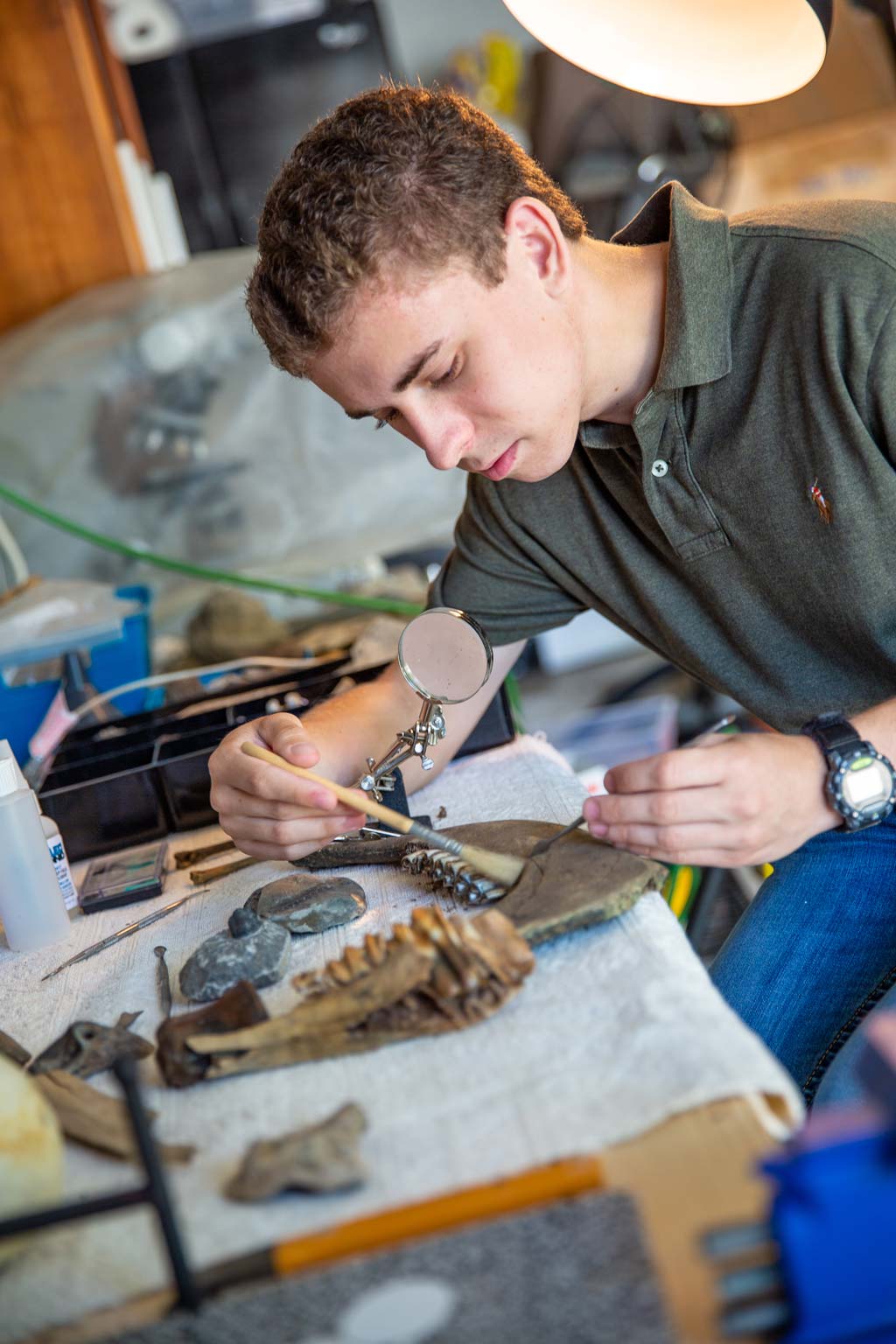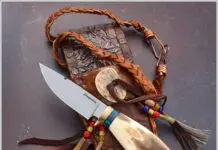
Martha Rongey is a lifelong rock hound and she married a geologist. But the fossil-collecting part of her hobby really took off after she joined the Tulsa Rock and Mineral Society a few years ago.
“I have personally dug up, in the Red River, huge specimens that weighed 30 pounds,” she says. “That was a club field trip. Some of us camped and pretty much dug all day.
“We hauled out so many beautiful species – animal specimens from the sea. I have an ammonite that’s bigger than the steering wheel in your car, and it’s lying in our flower bed.”
Fossils aren’t rocks, but fossils can be found within rocks. Many collectors, such as Bill Rushlau of the Ada Gem, Mineral and Fossil Society, came to fossils by way of rocks.
As a teenager, he was hired to help a shop owner load his wares and travel to rock shows. For two summers, Rushlau and his boss also collected rocks and fossils on the East Coast and in Wyoming, South Dakota and his native Nebraska.
In the more than 50 years since, Rushlau has consulted with scholars on scientific papers, found an extinct shark species from the Pennsylvania period (the fossil was eventually named for him) and built such a large collection that he often passes on duplicates he finds.
He says he’s become interested recently in “odd things. There’s a conical animal that is square in cross-section. There is one that looks like a clam and has an opening to suck in nutrients.”
At the other end of the age spectrum, James Puls, 18, has graduated from the Tulsa club’s Pebble Pups program and organizes adult field trips.
“Oklahoma has a lot of fossils, but not a lot of people know it,” says Puls, keen on paleontology “for as long as I can remember.”
Like many kids, he started with a fascination for dinosaurs. He branched out to searching for the many fossils of ancient sea creatures in southern Oklahoma and plant fossils in eastern Oklahoman. He also collects arrowheads, pottery and petrified wood.

Photo by Josh New
He says it’s amazing to hold something in his hand and envision someone else doing the same thousands of years ago.
Scientists don’t typically call the preserved remains of organisms fossils until they are more than 10,000 years old. Oklahoma has plenty of specimens much older. Ammonites, squid-like creatures with spiral shells, are among the invertebrates found in Lake Texoma and the Red River from the Cretaceous Period, 145 million to 66 million years ago.
Trilobites, for which Coal County is famous, were three-lobed arthropods resembling horseshoe crabs and lived from 500 million to 252 million years ago. Brachiopods – from the Cambrian Period, 542 million to 488 million years ago – are found in the Arbuckle Mountains and north of the Wichita Mountains, according to the Sam Noble Oklahoma Museum of Natural History.
To learn how to find these ancient treasures, people new to fossil collecting should join a society, Rongey says.
“We have a wealth of knowledge in the club,” she says. “We have monthly field trips. We know what we are going to look for, and how to find it.”






















